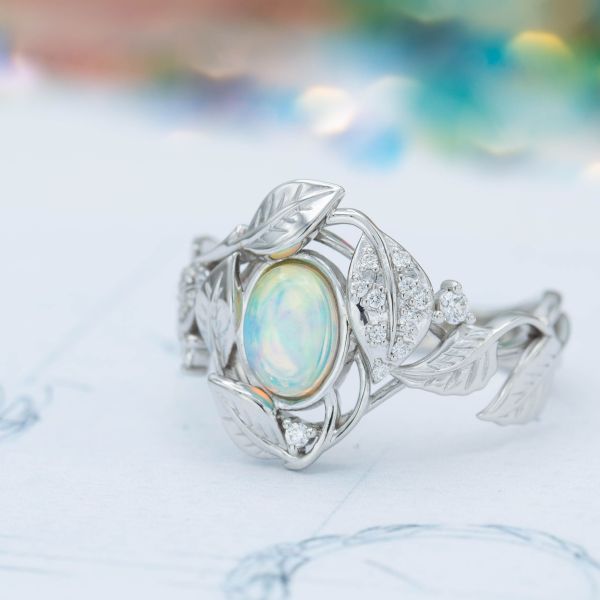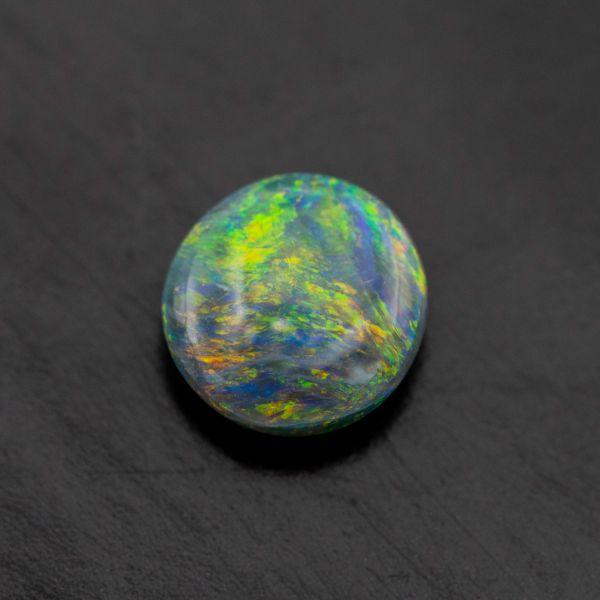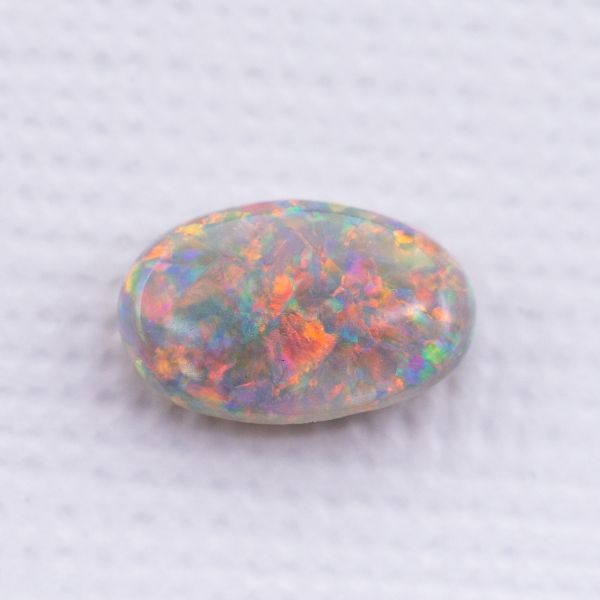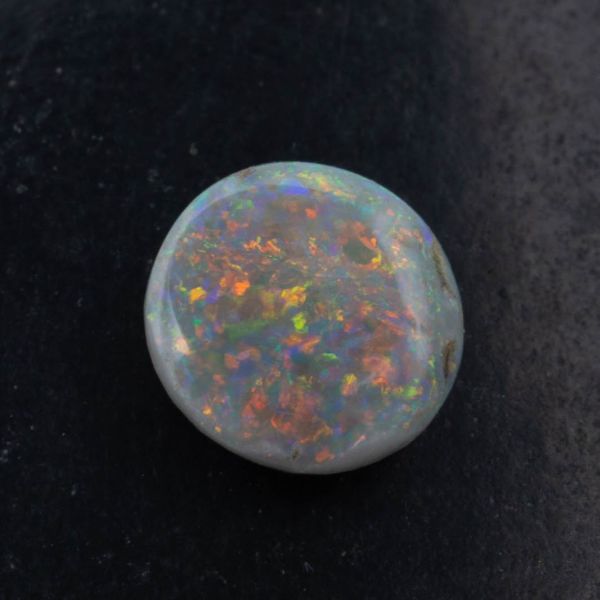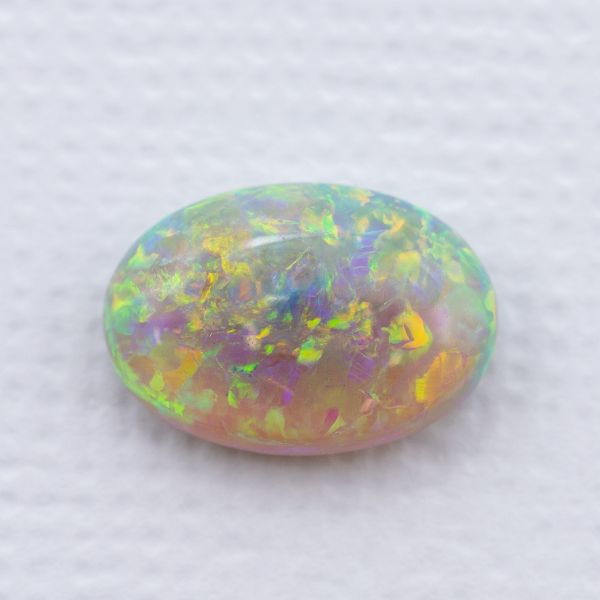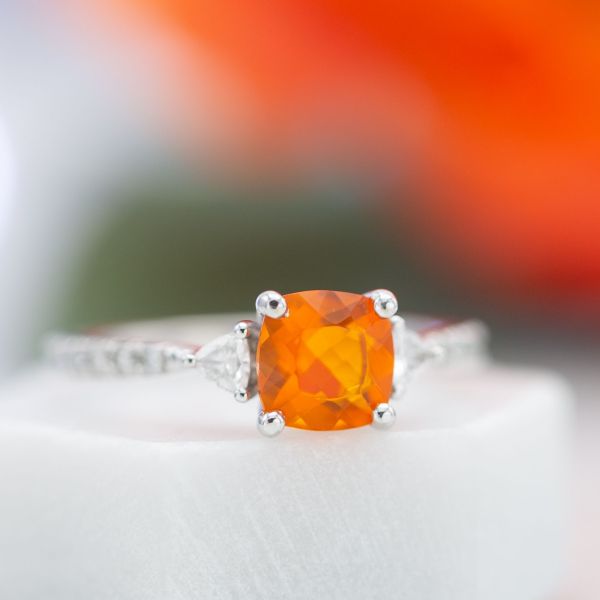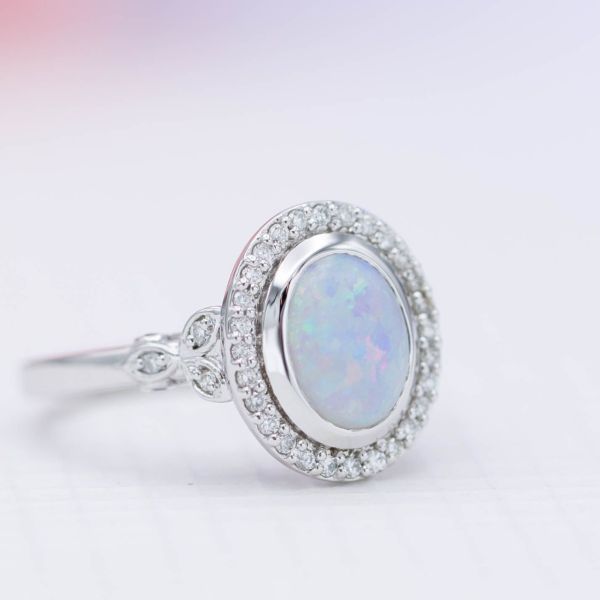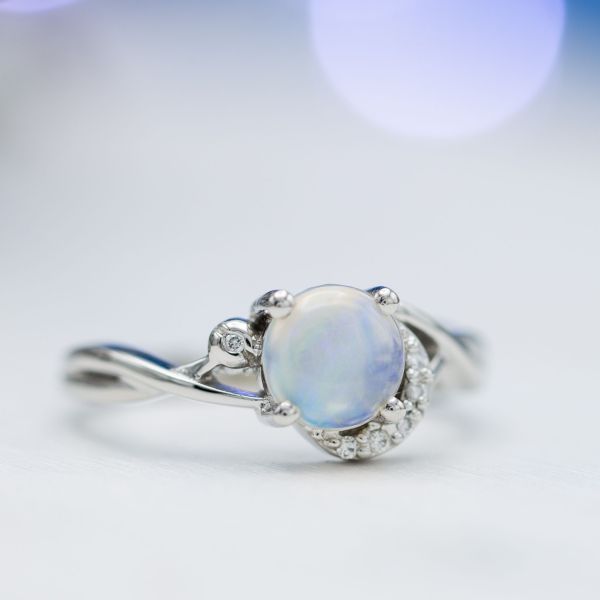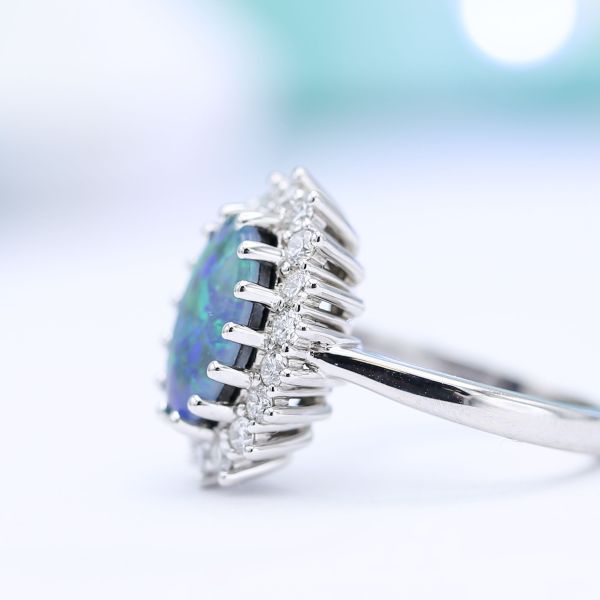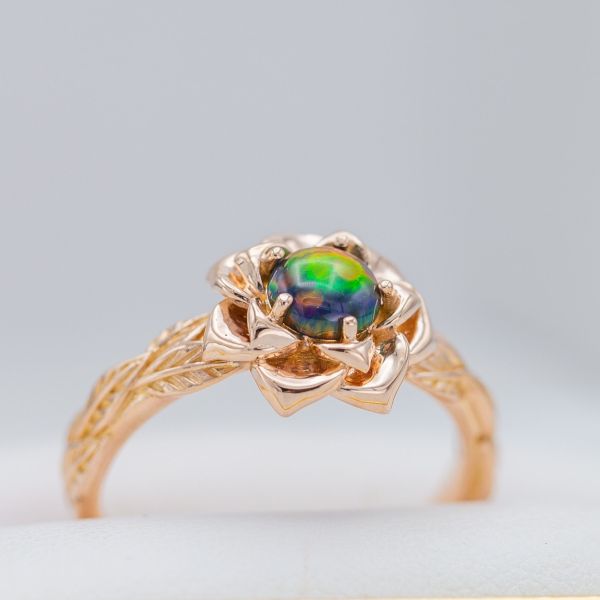Gemstone Knowledge
Types of Opal
White opal, black opal, crystal opal, boulder opal, fire opal, galaxy opal, and more
Overview
Opals are unique in the gem world. Despite deriving primarily from one country (Australia), they are the most colorful and visually varied gem type on earth. As any opal lover knows, they are frequently multicolored, flashing different hues depending on your angle and the light conditions. To make sense of all that variation, opals are classified into a variety of types, the most popular being white opal and black opal.
Does that mean that all white opals are white and black opals are black? Not at all. These terms have specific meanings in opal's classification system. This guide will introduce you to the fundamentals of that classification system, which is based on body tone and color play. We'll start by explaining the main opal types: white, black, dark, light, and crystal. Then, we'll cover a few special cases like boulder opal and common names for imitation opal, like galaxy opal.
Opal grading and classification
Body tone
Opals are graded on a scale of N1 (darkest body tone) to N9 (lightest body tone). There are a number of different naming conventions. Generally, tones of N1-N4 are referred to as black opals, N5-N6 are referred to as dark opals, and N7-N9 are referred to as white opals or light opals. Darker body tones are rarer and tend to display more vivid colors, so are typically more expensive.
Color play
The shade, brightness, and coverage of color on the opal all impact its appearance and value. The color play that make opal so unique is often referred to as color flash or fire. More prominent and brighter colors are typically more desirable and more expensive. Warm colors like red and orange are rarer than cool colors like blue and green, so they tend to be priced a bit higher.
Popular types of opal
White opal
In the US market, when most people think of opal, a white opal is what comes to mind. They are by far the most well known and most popular. Their light body color makes their color flashes subtler than some other opal types. Two styles are common: semi-translucent and opaque white. The semi-translucent stones usually feature larger rolling flashes of blue and green, while opaque white opals generally feature smaller, sharper flashes of color of all shades. Ours typically sell for $150-400.
Black opal
In Australia and Asia, black opals tend to be the most popular. 'Black' indicates these opal's darker body tone. They feature color flash of all shades, which shows up as more intense and more vivid because of the darker background tone. Because of their beauty and rarity, black opals with strong color flash are more valuable than other types of opals. Ours typically sell for $500-4,000.
What is Lightning Ridge Opal? Lightning Ridge is a small mining town in the Australian Outback that is the origin of more black opal than any other place on earth. For this reason, some jewelers in the trade refer to black opal as Lightning Ridge opal.
What is Coober Pedy Opal? Coober Pedy, in Southern Australia, is the world's largest opal field, producing the majority of Australia's white opal.
Light opal
Light opals have a slightly deeper body tone than white opals and thus tend to show a bit more color. Ours typically sell for $250-700.
Dark opal
Dark opals bridge the color tone gap between light opals and black opals. The finest dark opals can rival black opals for color intensity and quality. The difference in name is more of a technical distinction than it is a critical one for appearance. Ours typically sell for $400-2,000
Crystal opal
In contrast to the mostly opaque options discussed so far, crystal opals feature a totally translucent body. That allows flashes of color to shine through uninhibited. Their intense color makes crystal opals a popular choice. Similar to black opal, the most colorful crystal opals are quite rare. Ours typically sell for $400-2,500.
Specialty opal varieties
Beyond the core categories we've already discussed, there are a handful of opal types and terms you're likely to encounter. In this section, we'll provide a brief overview of these.
Fire opal
"Fire opal" and "Mexican fire opal" refer to a specific type of opal with a transparent yellow, orange, or red body color. Unlike other types of opal, they typically have just a single color and don't have any other flashes of color, making them look much more like typical colored gems. More rarely, there are fire opals with multicolored flashes—but these are typically collector stones and difficult to find. As the name suggests, fire opals are most commonly found in Mexico.
"Fire" is a term with multiple meanings relating to opal. It most frequently refers to the multicolored flashes on the body of many opals. In this context, most opals are "fiery" or show "intense fire." Don't confuse this with a "fire opal," which is a very specific type of solid-colored opal (which, ironically, usually doesn't have any multi-colored flashes). Finally, some online dealers use the term "fire opal" to erroneously refer to imitation opals, made largely of glass and epoxy. These aren't opals at all, so that's a particularly frustrating choice of words.
Boulder opal
Opal that forms directly on a rock is known as boulder opal. The underlying rock actually remains part of the stone, typically making for freeform organic shapes. This makes boulder opals great for expressive pendants and a less common choice for rings.
Mosaic opal
A mosaic pattern (also known as a harlequin pattern) is a highly desirable display of opal color flash that resembles the squares of a quilt. When found in natural opals, it adds meaningfully to the stone's value. Quite often, however, a mosaic pattern is an indication of an assembled or lab-created stone. For example, an opal triplet can be created with many swatches of precious opal to create a mosaic pattern. Lab-created opals are sometimes grown in a way that produces a mosaic pattern, which can usually be identified by the regularity of the pattern.
Blue opal, green opal, red opal
Opals come in all colors—with blue, green, and red being some of the most popular. Unlike the terms "white opal" and "black opal," which have specific meanings for opal classification, other color names like blue opal do not. They refer to a stone's dominant color (or colors). If you're looking for an opal that appears blue, you can find white, black, or crystal opals that look mostly blue. You could be drawn to a white opal with blue color play (or blue fire). You might also find a translucent white or crystal opal with a blue hue. Or you might like a black opal with deep blue coloration. Of course, most opals will display a mix of colors, even if one is dominant.
Doublets and Triplets
Doublets and triplets are ways of modifying natural opals to create an enhanced look. Doublets are the result of attaching a black backing to a natural, precious opal. As discussed in the case of black opals, a dark background or body color is best for showcasing opal's vibrant colors. This assembled doublet offers vivid colors at a reduced price. Triplets take assembly one step further, adding a clear layer on top of the opal, which protects it from scratching and chemical damage. The most common materials for this assembly are common opal (often referred to as potch) for the black backing and quartz for the top layer.
Lab-created opal
Featuring the same composition as natural opal, lab-created opal is grown in a lab instead of in nature. Lab-created opal can be a great choice if you're looking for black opal with lots of red and orange at an affordable price. It can also work well if you want to match lots of opals together as more standardization is available than in natural stones.
Imitation opal
Imitation refers to man-made stones made up of glass and other materials to create an interesting look that mimics opal, but isn't made of the same material. A lot of times a pattern is formed on paper or a flat surface and then a hemisphere of glass is placed on top. These imitations are often confusingly referred to as "Galaxy opals" or "Dragon's Breath opals". They're sometimes referred to as "Fire opals", which is extra confusing (as we discussed above). We don't offer imitation opals.
Getting Started
In the sections above, you saw examples from across the N1-N9 body tone spectrum. And you probably found that the distinctions can be quite subtle. It takes an opal expert's eye to properly distinguish dark opal from black opal, for example. Making things even more confusing, it's common to see opals labeled inconsistently or incorrectly. So, while it's helpful to understand this classification system, we always encourage shoppers to trust their eyes when making a selection.
Opals are a specialty of ours at CustomMade. There's just nothing quite like the color play that makes each mesmerizing opal perfectly unique. Some prefer the pale pastel shades of a subtle white opal. Others love the intense colors of black opal. No two are alike, just as no two people's tastes are the same. And that's what makes this gem such a great reflection of personality.
We've hand-picked an extensive private collection and cultivated relationships with a handful of trusted cutters and suppliers to make sure we can find the right opal for every one of our customers. Our gem experts love to geek out about opals, so send our team a message if you have questions or want to learn more!
About CustomMade
CustomMade designs and creates one-of-a-kind, custom engagement rings and fine jewelry. Each piece we create is inspired by you, designed for you, and made just for you.

